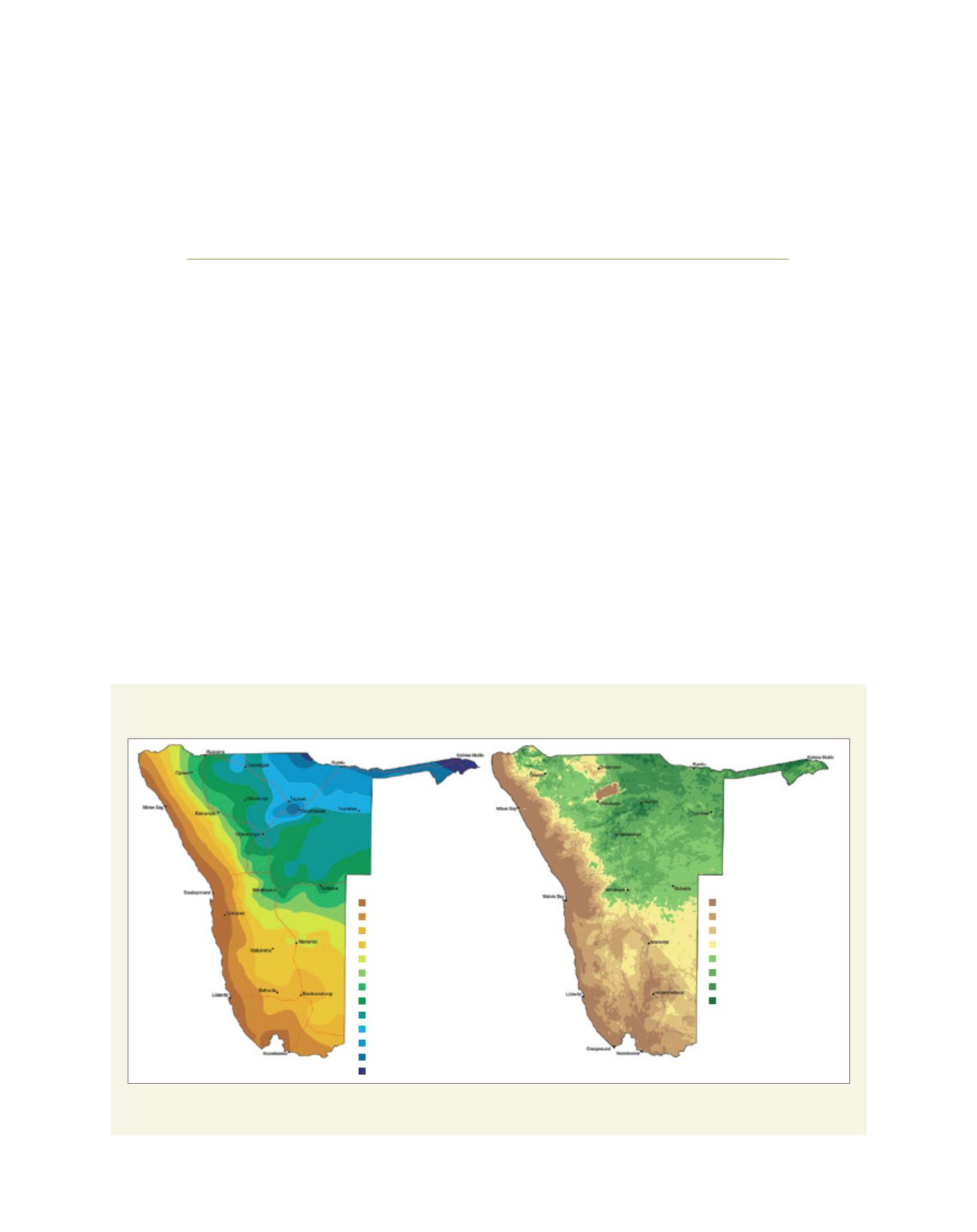

[
] 55
Translating policy into action — efforts
to combat desertification, land
degradation and drought in Namibia
Teofilus Nghitila and Bryn Canniffe, Department of Environmental Affairs,
Ministry of Environment and Tourism, Namibia
I
ssues of desertification, land degradation and drought
are particularly important to Namibia. Known as the
land between two deserts, Namibia is the driest country
in sub-Saharan Africa, with over 90 per cent of its landmass
classified as hyper-arid, arid or semi-arid. Annual rainfall
varies from just 10 mm in the south-west to some 700 mm
in the more tropical north-east. In all parts of the country
rainfall is highly variable and unpredictable.
This situation is expected to worsen under the climate change
scenario with increasing temperatures, an increased number of
drought and flood events and even greater rainfall variability
expected. Namibia already experienced its worst drought in 30
years in 2013 and rainfall is also well below average in 2015,
which is a major threat to water and food security in the country.
In spite of these harsh conditions, almost 70 per cent of the
population relies on agriculture to some extent for their liveli-
hood, while approximately 71 per cent of the land surface is
used for agriculture and mainly livestock farming. This high
level of dependence on the land exists despite the predomi-
nance of infertile soils and harsh climatic conditions.
These factors make the United Nations Convention to
Combat Desertification (UNCCD) highly important for
Namibia, particularly the first two strategic objectives of the
UNCCD 10 Year Strategic Plan — to improve the living condi-
tions of affected populations and to improve the condition of
affected ecosystems. The bottom-up approach of the UNCCD
also resonates with Namibia, which aims to empower commu-
nities, especially women, as these are the custodians and
day-to-day managers of the land and its resources.
Average annual rainfall and average plant production in Namibia
Source: Mendelsohn 2002
1
100–150
150–200
50–103
Less than 50
Average annual rainfall (mm)
500–550
550–600
More than 600
450–500
400–450
300–350
350–400
250–300
200–250
Low
Medium
Very low
Bare ground, extremely low
Green vegetation biomass
Extremely high
Highest
Very high
High
100–150
150–200
50–103
Less than 50
Average annu l rainfall (mm)
500–550
550–600
More than 600
450–500
400–450
300–350
350–400
250–300
200–250
Low
Medium
Very low
Bare ground, extremely low
Green vegetation biomass
Extremely high
Highest
Very high
High
L
iving
L
and
















